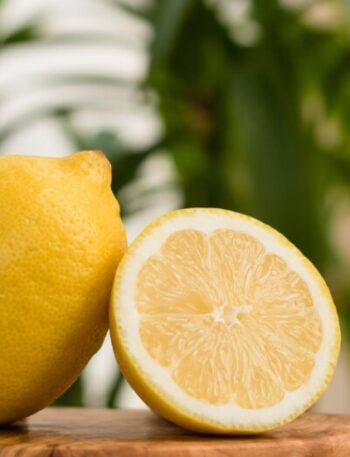The Versatile Fruit of the Tropics. The coconut is one of the most fascinating and versatile fruits on the planet, often referred to as the “tree of life” because of its wide range of uses and importance to tropical communities. From its iconic presence on sandy beaches to its vital role in culinary, industrial, and cultural practices, the coconut has shaped human life in numerous ways. This article explores the coconut’s origins, botanical characteristics, cultural significance, and many uses, providing a comprehensive introduction to this extraordinary fruit.
Origins and History
The coconut palm (Cocos nucifera) is believed to have originated in the Indo-Pacific region, with some scholars suggesting areas around Southeast Asia or the islands of the Pacific Ocean as its ancestral home. Its distribution was aided both by natural oceanic dispersal and by human migration and trade, which helped spread the coconut palm across tropical regions around the world.
Historical records show that coconuts have been cultivated for thousands of years, with early evidence of their use dating back at least 4,000 years. Ancient civilizations in India, Southeast Asia, and the Pacific islands revered the coconut palm for its many gifts, including food, drink, fiber, and building materials.
The coconut’s ability to float across oceans in its fibrous husk allowed it to colonize distant islands, where it quickly became a staple resource. Its significance has only grown with time, as the coconut palm became an integral part of life for many coastal and island communities.
Botanical Characteristics
The coconut palm is a member of the Arecaceae family and is a tall, slender tree that can grow up to 30 meters (about 100 feet) in height. It thrives in tropical climates with sandy soil, high humidity, and plenty of sunshine, making coastal regions and islands ideal habitats.
The tree produces large, pinnate leaves—long and feather-like—that can reach lengths of 4 to 6 meters. These leaves give the palm its iconic silhouette against tropical skies. The tree begins bearing fruit after about 6-10 years and continues producing coconuts for many decades.
The coconut fruit itself is a drupe, which means it has a hard outer shell (the husk), a fibrous middle layer, and a hard inner shell protecting the seed inside. The seed contains the coconut water and the white, fleshy meat known as the “kernel.” The coconut’s unique structure allows it to float in seawater, facilitating its dispersal.
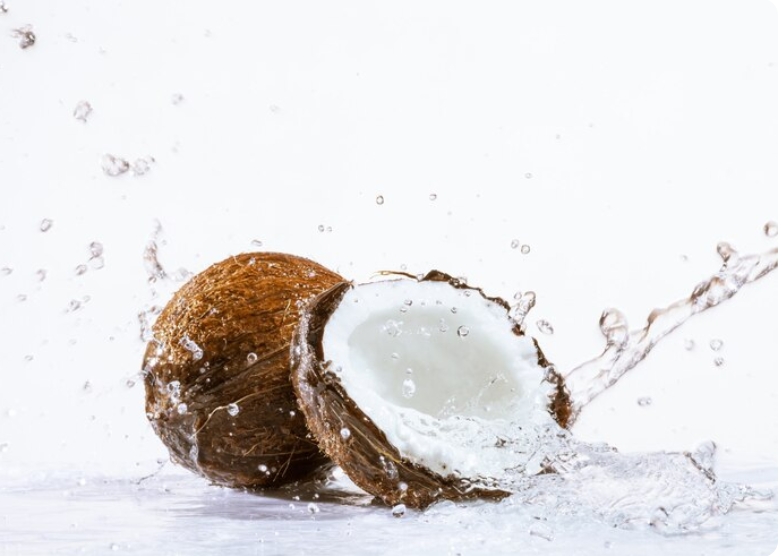
Structure of the Coconut
The coconut consists of several distinct parts:
- Exocarp: The outermost smooth green or brown skin.
- Mesocarp: The fibrous husk (coir) beneath the skin, which is thick and used industrially for ropes, mats, brushes, and more.
- Endocarp: The hard, woody shell that protects the seed.
- Endosperm: The edible white flesh or kernel inside the shell.
- Coconut water: The clear liquid inside the cavity, which serves as nourishment for the developing seed.
Each part of the coconut has its own use, making it one of the most resourceful plants in the natural world.
Culinary Uses
Coconut plays a crucial role in the cuisines of tropical regions worldwide. The fruit’s flesh, water, milk, and oil form the basis of many traditional recipes.
- Coconut Water: Naturally sweet and refreshing, coconut water is consumed directly from young, green coconuts. It is often bottled and sold globally as a natural hydration drink.
- Coconut Flesh: The white kernel can be eaten fresh, grated, dried (copra), or toasted. It’s used in both sweet and savory dishes, from curries and stews to desserts like coconut macaroons and cakes.
- Coconut Milk and Cream: Extracted by grating the coconut flesh and soaking it in hot water, these liquids are fundamental in many Southeast Asian, Caribbean, and South Indian dishes. They provide a rich, creamy texture and flavor.
- Coconut Oil: Extracted from dried coconut meat, coconut oil is used both in cooking and as a base for many processed foods.
The culinary flexibility of coconut allows it to be incorporated into breads, snacks, beverages, sauces, and even confectioneries, making it a beloved ingredient around the world.
Non-Culinary Uses
Beyond the kitchen, coconut provides an array of products and materials essential to daily life, especially in tropical regions:
- Coir: The fibrous husk of the coconut is processed into coir, a natural fiber used in mats, brushes, ropes, upholstery stuffing, and mattresses. It is also a sustainable alternative in horticulture as a growing medium.
- Wood: The trunk of the coconut palm, often called “coco lumber,” is used in furniture making, construction, and handicrafts.
- Leaves: The leaves serve as materials for thatching roofs, weaving baskets, mats, and hats.
- Shell: The hard shell can be carved into utensils, bowls, musical instruments, and decorative items.
- Charcoal: Coconut shells are often burned to produce charcoal, which is widely used as fuel.
The coconut palm is a valuable source of renewable materials, contributing to both traditional livelihoods and modern industries.
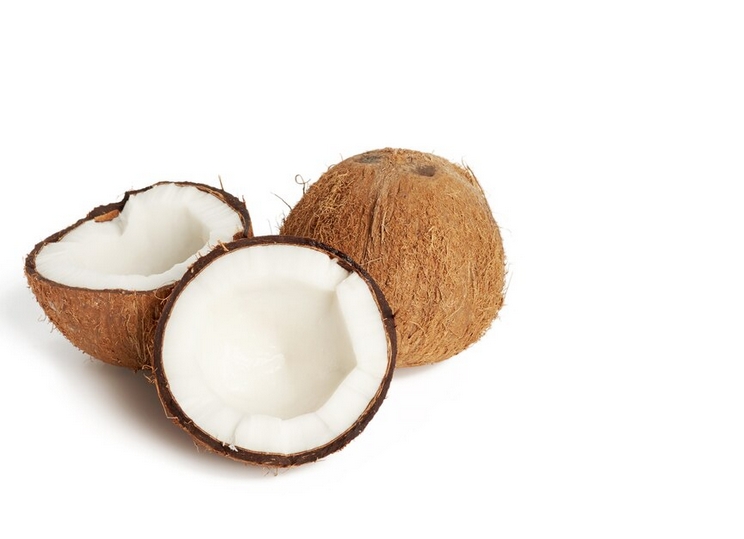
Cultural Significance
In many tropical societies, the coconut palm holds deep cultural, religious, and symbolic importance. It is often seen as a symbol of life, fertility, and prosperity.
- Religious Ceremonies: In Hinduism and other South Asian religions, coconuts are used in rituals, offerings, and ceremonies, symbolizing purity and auspiciousness.
- Folklore and Mythology: Many island cultures feature the coconut palm in their myths, stories, and songs, reflecting its integral role in survival and sustenance.
- Traditional Medicine: While this article does not delve into health benefits, it is worth noting that coconuts have long been part of traditional healing practices in various cultures.
- Craftsmanship and Art: The coconut and its parts have inspired artists and artisans for centuries, leading to unique handicrafts that celebrate local heritage.
The coconut’s cultural footprint spans both the practical and spiritual dimensions of life, making it more than just a food source.
Economic Importance
Coconut cultivation is a major economic activity in many tropical countries such as the Philippines, Indonesia, India, Sri Lanka, Thailand, and several Pacific island nations. Millions of people depend on coconut farming and related industries for their livelihoods.
- Agriculture: Coconut palms are often grown on family farms or small plantations, providing income through the sale of coconuts and coconut products.
- Export Commodities: Products like copra, coconut oil, coir fiber, and desiccated coconut are significant exports that contribute to national economies.
- Employment: The coconut industry generates millions of jobs worldwide, ranging from farming and harvesting to processing and manufacturing.
With rising global demand for natural and sustainable products, the economic significance of coconut and its derivatives continues to grow.
Environmental Adaptability
The coconut palm’s ability to thrive in poor, sandy soils and withstand salt spray makes it uniquely suited to coastal environments. It plays an important role in stabilizing shorelines and preventing erosion.
Its cultivation can support biodiversity and provide shade and shelter for other crops and animals. However, coconut farming also requires careful management to avoid monoculture practices that could degrade soil health and reduce biodiversity.
Coconut in the Modern World
In recent decades, the coconut has gained global popularity far beyond tropical regions. The rise of coconut water as a health beverage, coconut oil in beauty and cooking, and coconut-based snacks and products has turned it into a global commodity.
Technological advances have also enabled more efficient harvesting and processing, expanding the range of products made from coconut and increasing their availability worldwide.
Conclusion
The coconut is a remarkable fruit with unparalleled versatility and significance. From its origins in tropical regions to its place in modern kitchens and markets, the coconut’s contributions to food, culture, industry, and economy are immense. Its multiple uses—from nourishment to construction to craft—highlight the ingenuity of nature and human adaptation.
Known as the “tree of life,” the coconut continues to inspire and sustain millions of people worldwide, embodying the rich connection between humans and the natural world in tropical landscapes.
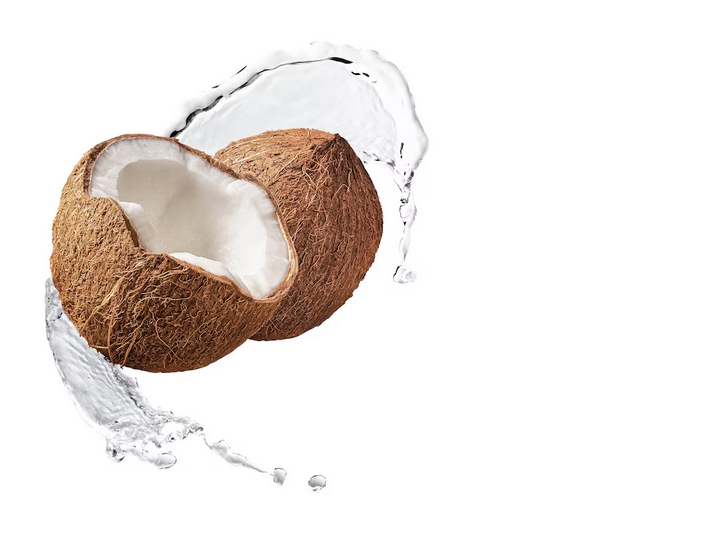
Health Benefits of Coconut
1. Supports Heart Health
Coconut contains medium-chain triglycerides (MCTs), a type of healthy fat that can provide a quick source of energy and may help improve cholesterol levels. Some studies suggest that MCTs help increase HDL (good) cholesterol while potentially reducing LDL (bad) cholesterol. This balance can support overall cardiovascular health, contributing to a healthier heart when consumed as part of a balanced diet.
2. Provides Quick Energy
The MCTs in coconut are metabolized differently than long-chain fatty acids, as they are absorbed directly into the bloodstream and transported to the liver, where they are rapidly converted into energy. This makes coconut an excellent source of quick and sustained energy, particularly beneficial for athletes, those on ketogenic diets, or anyone needing a natural energy boost.
3. Promotes Digestive Health
Coconut meat contains dietary fiber, which is essential for maintaining healthy digestion. Fiber helps promote regular bowel movements and prevent constipation. Additionally, the natural oils in coconut possess antimicrobial properties that may help balance gut bacteria and reduce harmful pathogens, supporting a healthy digestive system.
4. Supports Immune Function
Coconut oil and water contain lauric acid, a compound known for its antimicrobial, antifungal, and antiviral properties. Lauric acid helps the body fight off infections by targeting harmful microorganisms. This makes coconut a natural ally in supporting immune defenses and promoting overall health.
5. Hydrates and Replenishes Electrolytes
Coconut water is rich in electrolytes such as potassium, sodium, and magnesium. These minerals are vital for maintaining proper hydration, nerve function, and muscle function. Coconut water is a natural and refreshing way to replenish electrolytes lost through sweating or physical exertion.
6. Supports Weight Management
Medium-chain triglycerides (MCTs) in coconut may aid weight management by increasing metabolism and promoting feelings of fullness. MCTs have been shown to increase energy expenditure and fat oxidation, potentially helping reduce fat accumulation over time. Including coconut in the diet may support healthy weight control when combined with a balanced lifestyle.
7. Promotes Healthy Skin
Coconut oil is widely used as a natural moisturizer because of its emollient properties. It helps hydrate the skin, reduce dryness, and protect against irritation. Its antimicrobial effects can also help prevent skin infections. Applying coconut oil topically can improve skin texture and provide a natural glow.
8. Enhances Brain Function
The MCTs found in coconut oil can provide an alternative energy source for the brain, especially beneficial in neurodegenerative conditions like Alzheimer’s disease. Some research suggests that these fats may help improve cognitive function and memory by supplying ketones, which are readily used by brain cells for energy.
9. Supports Bone Health
Coconut contains essential minerals such as manganese, copper, and calcium, which are important for maintaining strong and healthy bones. These minerals contribute to bone formation, density, and repair. Regular consumption of coconut products may support skeletal health, particularly when combined with a balanced diet rich in other nutrients.
10. Aids in Blood Sugar Control
Coconut meat has a low glycemic index and contains fiber, which can slow the absorption of sugar into the bloodstream. This helps regulate blood sugar levels and reduce spikes after meals. For individuals with diabetes or those seeking to manage blood sugar, incorporating coconut into meals can be a beneficial strategy.
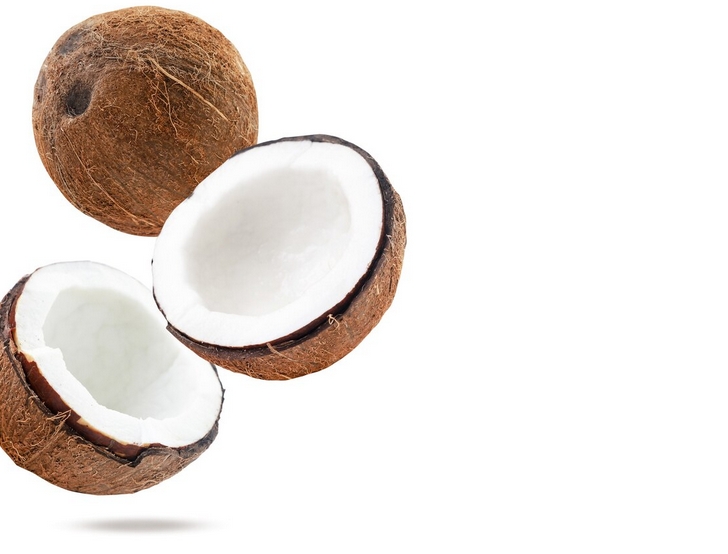
Frequently Asked Questions About Coconut
1. What exactly is a coconut?
A coconut is the fruit of the coconut palm tree (Cocos nucifera), native to tropical regions. It is classified as a drupe, which means it has a hard outer shell and a seed inside. The fruit consists of a fibrous husk, a hard shell, coconut water inside, and the edible white flesh called the kernel or meat. Coconuts are highly versatile, used for food, drink, oil, fiber, and other products.
2. How do you choose a good coconut?
When selecting a coconut, especially a mature brown one, look for one that feels heavy for its size, indicating a good amount of water and fresh meat inside. Shake it to hear the water sloshing inside, which confirms freshness. Avoid coconuts with cracks, mold, or dry spots on the shell. For young green coconuts, choose ones with a green outer shell that feels firm and heavy.
3. What is the difference between young and mature coconuts?
Young coconuts have a green outer shell and contain mostly coconut water with soft, jelly-like flesh inside. They are prized for their refreshing water. Mature coconuts have a brown, hairy shell with thicker, firmer white flesh and less water. Mature coconuts are typically used for extracting coconut milk, oil, and dried coconut products.
4. How is coconut water different from coconut milk?
Coconut water is the clear liquid naturally found inside young coconuts, known for its hydrating properties. Coco-nut milk, on the other hand, is made by grating mature coconut flesh and mixing it with water, then straining it. Coconut milk is creamy and used in cooking, whereas coconut water is a light beverage.
5. Can coconut oil be used for cooking?
Yes, coconut oil is widely used for cooking and baking. It has a high smoke point, especially the refined version, making it suitable for frying and sautéing. Coconut oil adds a mild, slightly sweet flavor to dishes and is popular in tropical cuisines as well as in health-conscious cooking.
6. Is coconut water healthy to drink?
Coconut water is considered a natural and nutritious beverage due to its electrolyte content, such as potassium, magnesium, and sodium. It is hydrating and often consumed as a natural sports drink. However, it does contain natural sugars, so moderation is recommended for those managing blood sugar.
7. What are some common culinary uses of coconut?
Coconut is used in many forms in cooking. Fresh or dried coconut meat is eaten raw or used in desserts, curries, and snacks. Coconut milk and cream enrich soups, sauces, and baked goods. Coco-nut oil is used for frying or as a butter substitute. Coconut water is drunk fresh or bottled as a beverage. Even coconut flour is popular in gluten-free baking.
8. How long can coconut products be stored?
Fresh coconut meat and water are highly perishable and should be consumed within a few days when refrigerated. Dried coconut and coconut oil have much longer shelf lives and can be stored for several months to over a year if kept in a cool, dry place. Proper storage helps maintain flavor and prevent spoilage.
9. Are all coconuts edible?
Yes, all coconuts are edible, but the taste and texture vary with maturity. Young coconuts are enjoyed for their water and soft meat, while mature coconuts provide firm meat ideal for oil and milk extraction. However, coconuts should be opened carefully to avoid injury from the hard shell.
10. Can coconut products cause allergies?
Coconut allergies are relatively rare compared to other tree nuts. However, some people may have sensitivities or allergic reactions to coconut oil, milk, or meat. It is important to consult a healthcare professional if you suspect an allergy, especially if you have known allergies to nuts or other related foods.


